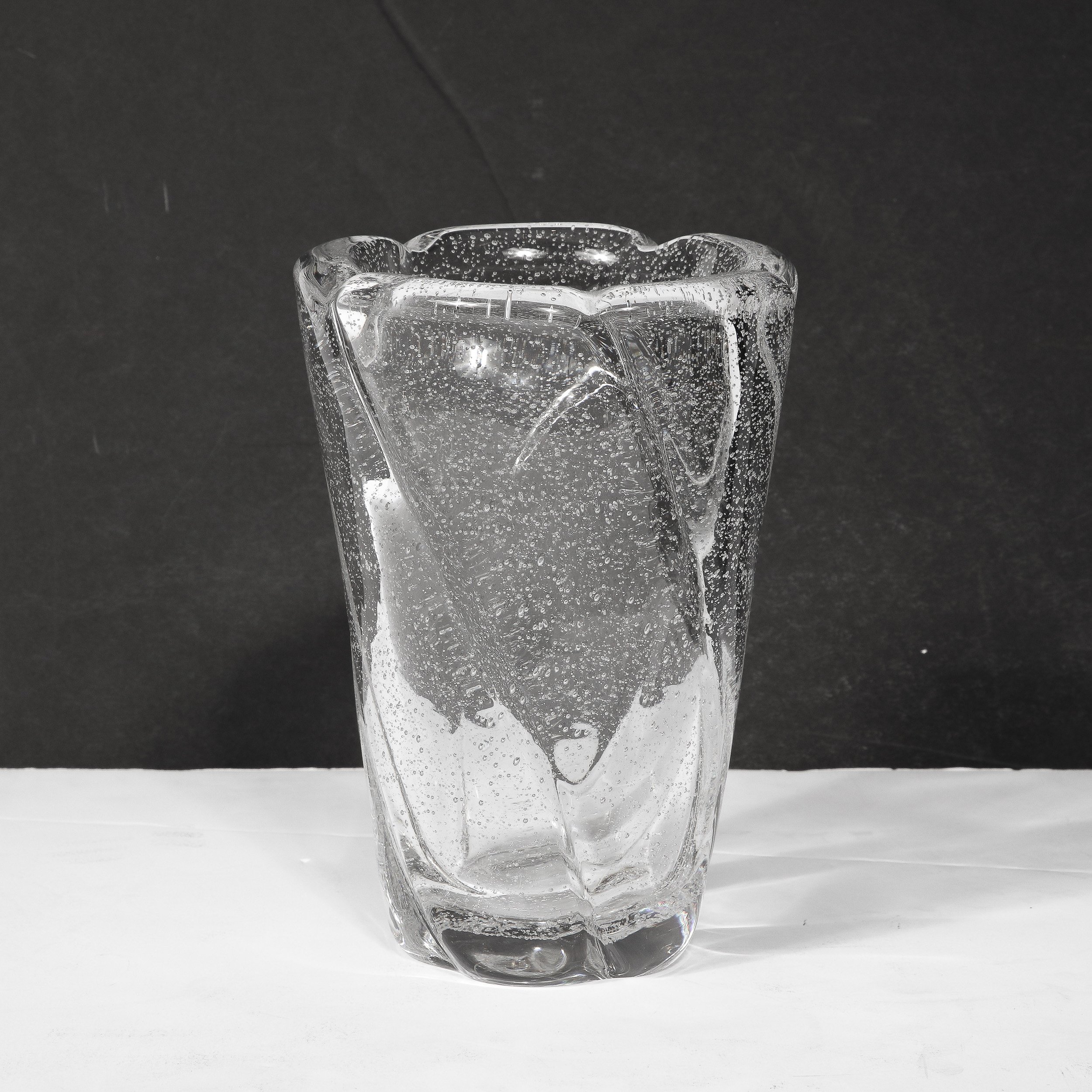Mid-Century Modernist Crystal Softened Spiral Fluted Vase w/ Murines signed Daum


















Mid-Century Modernist Crystal Softened Spiral Fluted Vase w/ Murines signed Daum
This Mid-Century Modernist Crystal Vase by Daum originates from Nancy, France, Circa 1960. A lovely piece brimming with quiet energy, the vase features stunning murine detailing within the crystal and a gently curved spiral of groves gracefully rising from the vase and ending at the mouth of the vase to create a softened organic scalloped edge. The movement of form and material shifts absorb light, stimulating the eye and bringing reserved elegance to this brilliant example of Mid-Century Modernist glass art by the esteemed maker Daum. Signed on the bottom edge of the piece. This elegant Vase will style brilliantly in a wide array of interiors and design movements from Mid-Century to Modern and Contemporary settings. In Excellent Vintage Condition.
France, circa 1960
Dimensions:
Height: 9.75 in (24.77 cm) x Diameter: 7 in (17.78 cm)
Creator: Daum (Maker)
Style: Mid-Century Modern (Of the Period)
Materials and Techniques: Glass
Place of Origin: France
Period: 1960-1969
Date of Manufacture: circa 1960
Condition: Excellent
Reference Number: LU793435426292
DAUM
Founded in 1878 by industrialist Jean Daum, the Daum crystal studio has grown from a modest glassworks in Nancy, France, to an internationally acclaimed house of luxury crystal art. Jean's sons, Auguste and Antonin, took over the family business and significantly propelled it into the Art Nouveau movement's limelight, particularly during the Universal Exhibition of 1900 where Daum received the prestigious Grand Prix medal.
Under their leadership, Daum crystal became renowned for its intricate designs combining acid etching, carving, and enameling. The studio's signature involved integrating applied glass elements that mirrored natural forms, which became a hallmark of Daum's pieces. The brothers were instrumental in reinvigorating the ancient technique of pâte de verre, a method where glass paste is molded and then kiln-fired, a process dating back to ancient Egypt.
The onset of World War I temporarily halted production, but by 1917, the factory resumed operations under a new name, "Societe Anonyme des Verreries Schneider," continuing to favor Art Nouveau styles while starting to introduce Art Deco elements. Post-World War I, Paul Daum, the next generation, began steering designs towards the Art Deco aesthetic, emphasizing linear and geometric shapes which marked a significant shift from the naturalistic forms of earlier periods.
In the years following, Daum collaborated with numerous artists, enhancing its offerings with innovative designs and techniques. Despite the economic challenges posed by the 1929 Wall Street crash, Daum managed to sustain production by adapting designs to simpler forms and fewer colors, catering to a changing market. The interwar and post-WWII periods saw a continued evolution in style, with the company increasingly focusing on the clarity and form of glass, aligning with contemporary trends.
By the late 20th century, Daum had cemented its reputation in the luxury goods market, known for both traditional craftsmanship and avant-garde artistry. It continued to produce high-end crystal sculptures and functional items using both time-honored and modern glass-making techniques. Today, Daum pieces, whether from the early 20th century or contemporary lines, remain coveted by collectors and art enthusiasts worldwide, celebrated for their quality and artistic integrity.











